Surya Namaskar
A Holistic Journey Toward Wellness
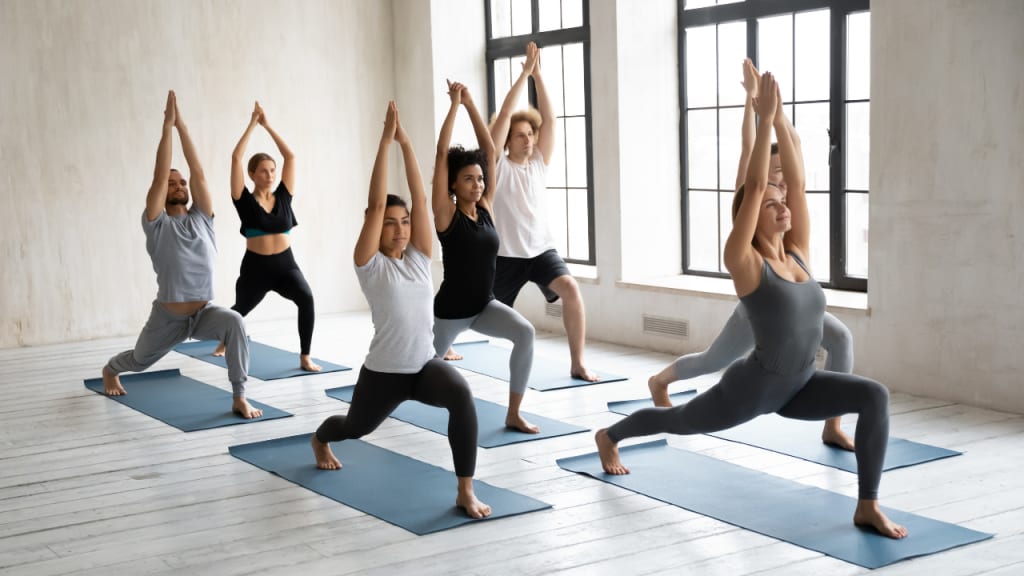
Surya Namaskar, or Sun Salutation, is a revered yoga sequence that not only pays homage to the celestial body that sustains life on Earth but also serves as a comprehensive exercise regimen for the mind, body, and soul. Rooted in ancient Indian tradition, its origins can be traced back to the Vedas, ancient scriptures dating back thousands of years.
The practice of Surya Namaskar has deep spiritual and cultural significance in India. It is believed to have been developed as a form of worship to Surya, the sun god, in Hindu mythology. Over time, it evolved into a sequence of yoga postures that synchronize breath with movement, promoting physical health, mental clarity, and spiritual awakening.
Step-by-Step Instructions:
Surya Namaskar comprises a series of 12 dynamic postures, each flowing seamlessly into the next. Here's a step-by-step guide along with the meanings and benefits of each posture:
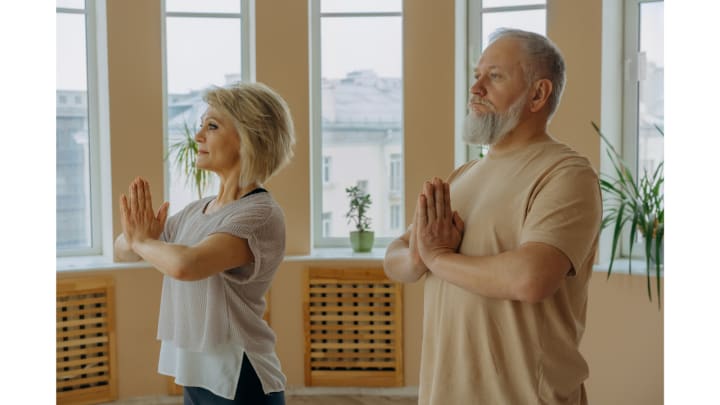
Pranamasana (Prayer Pose):
Meaning: Salutation or reverence.
Benefits: Calms the mind, centers attention, and initiates the practice with a sense of gratitude and respect.
- Stand tall at the front of your mat with your feet together or hip-width apart.
- Bring your palms together in front of your chest in a prayer position (Namaste).
- Take a moment to center yourself, close your eyes, and focus on your breath.
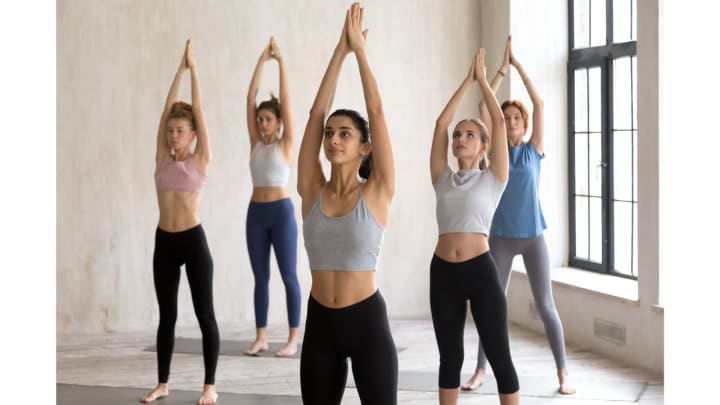
Hasta Uttanasana (Raised Arms Pose):
Meaning: Stretching the arms.
Benefits: Stretches the chest and abdomen, improves lung capacity, and promotes flexibility in the spine.
- Inhale deeply as you lift your arms overhead, stretching upward while keeping your palms together.
- Arch your back slightly and tilt your head gently backward, lengthening the spine.
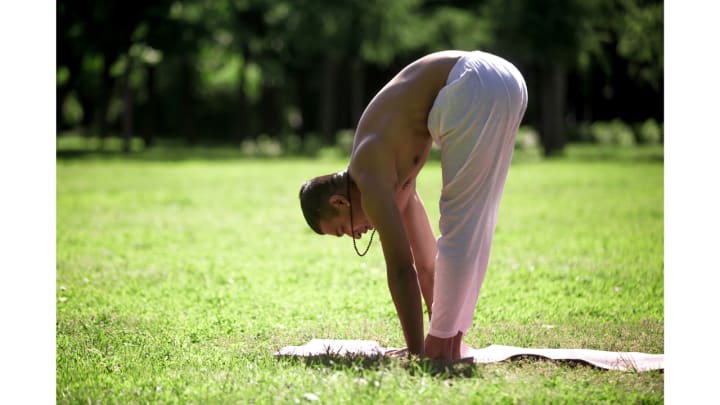
Hasta Padasana (Hand to Foot Pose):
Meaning: Hand to foot.
Benefits: Stretches the hamstrings, calves, and spine, improves digestion, and stimulates abdominal organs.
- Exhale slowly as you bend forward from your hips, keeping your spine long.
- Bring your hands down to the floor beside your feet or grasp your ankles, shins, or thighs, depending on your flexibility.
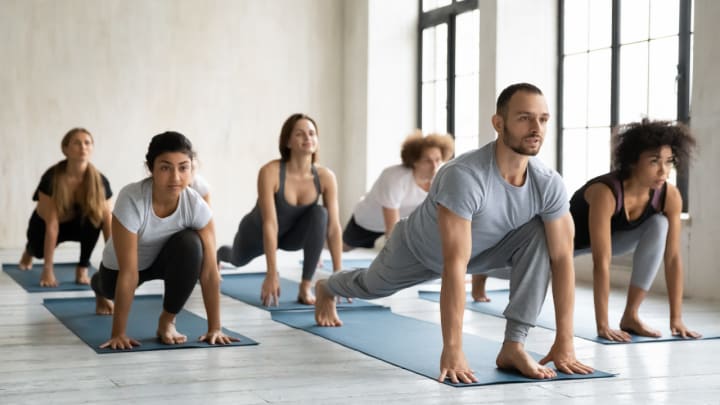
Ashwa Sanchalanasana (Equestrian Pose):
Meaning: Horse-riding pose.
Benefits: Strengthens the legs, opens the hips, and stretches the spine and chest.
- Inhale deeply as you step your right foot back, placing the ball of your foot on the floor.
- Keep your left knee bent at a 90-degree angle, aligning it directly over your left ankle.
- Lift your chest and gaze forward, engaging your core muscles for stability.

Dandasana (Stick Pose):
Meaning: Staff pose.
Benefits: Improves posture, strengthens the arms and wrists, and tones the abdominal muscles.
- Exhale as you step your left foot back to meet the right, coming into a plank position.
- Align your body in a straight line from head to heels, engaging your abdominal muscles and pressing through your palms.
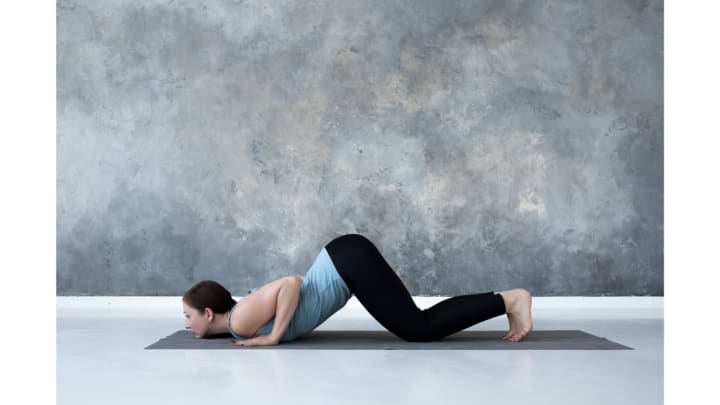
Ashtanga Namaskara (Salute with Eight Parts or Points):
Meaning: Eight-limbed pose.
Benefits: Strengthens the arms, chest, and core muscles, enhances body awareness, and improves concentration.
- Lower your knees, chest, and chin to the floor, keeping your elbows close to your body.
- Your hips should be slightly raised, and your toes should be pointed, touching the ground.
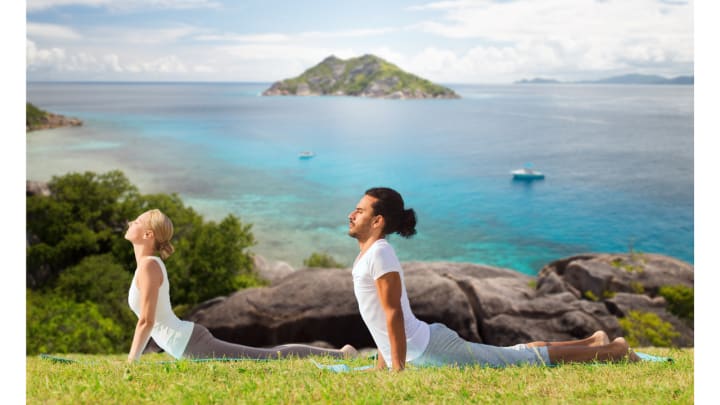
Bhujangasana (Cobra Pose):
Meaning: Cobra or snake pose.
Benefits: Opens the heart, strengthens the spine, and stimulates the digestive organs.
- Inhale as you slide forward, untucking your toes and lifting your chest off the mat.
- Keep your elbows bent and close to your sides, with your shoulders relaxed away from your ears.
- Gaze upward or slightly forward, lengthening the front of your neck.

Parvatasana (Mountain Pose):
Meaning: Mountain pose.
Benefits: Stretches the spine and hamstrings, relieves tension in the shoulders, and calms the mind.
- Exhale as you lift your hips up and back, coming into a downward-facing dog pose.
- Press your palms firmly into the mat, lengthen your spine, and straighten your legs as much as possible.
- Relax your head and neck, allowing them to hang freely.

Ashwa Sanchalanasana (Equestrian Pose): (Same as step 4)
Meaning: Horse-riding pose.
Benefits: Strengthens the legs, opens the hips, and stretches the spine and chest.
- Inhale deeply as you step your right foot forward between your hands, returning to the lunge position.
- Keep your left leg straight and strong, sinking your hips down and forward to deepen the stretch.

Hasta Padasana (Hand to Foot Pose): (Same as step 3)
Meaning: Hand to foot.
Benefits: Stretches the hamstrings, calves, and spine, improves digestion, and stimulates abdominal organs.
- Exhale as you step your left foot forward to meet the right, coming into a forward fold.
- Keep your knees slightly bent if necessary and relax your upper body over your legs.
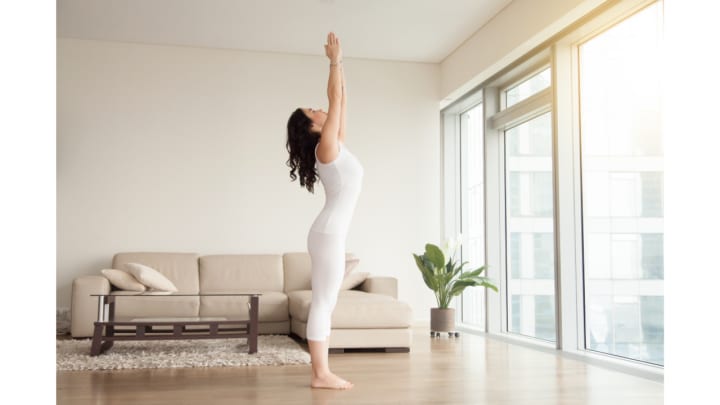
Hasta Uttanasana (Raised Arms Pose): (Same as step 2)
Meaning: Stretching the arms.
Benefits: Stretches the chest and abdomen, improves lung capacity, and promotes flexibility in the spine.
- Inhale as you sweep your arms out to the sides and up overhead, coming back to a standing position.
- Press your palms together and arch your back slightly, reaching upward.

Tadasana (Mountain Pose):
Meaning: Palm tree pose.
Benefits: Improves posture, increases energy, and promotes mental clarity.
- Exhale as you bring your palms together in front of your chest, returning to the prayer position.
- Take a moment to breathe deeply and center yourself before beginning the next round or transitioning into other poses.
Repeat these 12 steps for the desired number of rounds, synchronizing each movement with your breath for a fluid and meditative practice.
Modifications for Seated Surya Namaskar:
For individuals who may have difficulty or may be unable to perform the traditional standing sequence for any reason, a seated version of Surya Namaskar can be practiced. Here are modified instructions to be done while seated in an armless chair. The modifications are kept as close to the original poses as possible.
Seated Pranamasana (Seated Prayer Pose):
Sit tall on a chair with feet flat on the floor, bring palms together in front of the chest, and take a moment to center yourself.
Seated Hasta Uttanasana (Seated Raised Arms Pose):
Inhale and raise your arms overhead, stretching upwards while keeping the spine long.
Seated Hasta Padasana (Seated Hand to Foot Pose):
Exhale and bend forward from the hips, reaching towards your feet or as far down as comfortable.
Seated Ashwa Sanchalanasana (Seated Equestrian Pose):
Inhale, extend one leg back, keeping the foot on the floor for stability, and bend the opposite knee, bringing it towards the chest.
Seated Dandasana (Seated Stick Pose):
Sit tall with legs extended in front, hands resting beside the hips, and spine straight.
Seated Ashtanga Namaskara (Seated Salute with Eight Parts):
Lower your chest towards your thighs, bringing your forehead to your knees, while keeping your hands on the floor beside your feet.
Seated Bhujangasana (Seated Cobra Pose):
Inhale and lift the chest, arching the spine gently while keeping the shoulders relaxed.
Seated Parvatasana (Seated Mountain Pose):
Exhale and lift the hips slightly off the chair, bringing the torso parallel to the floor while keeping the arms straight.
Repeat Steps 4-8:
Repeat the sequence on the opposite side if applicable.
Repeat Steps 2-1:
Complete the sequence by returning to the starting position, bringing the palms together in front of the chest.
Benefits of Surya Namaskar:
- Regular practice of Surya Namaskar offers numerous benefits, including:
- Improved flexibility and strength.
- Enhanced cardiovascular health.
- Increased mental clarity and focus.
- Stress reduction and improved mood.
- Detoxification of the body through increased circulation and lymphatic drainage.
- Promotion of holistic well-being, aligning mind, body, and spirit.
Incorporating Surya Namaskar into your daily routine can serve as a transformative practice, nurturing harmony and vitality in every aspect of your being. Whether performed standing or seated, its essence remains the same—a journey towards radiant health and inner peace.
The claims in this article are based on my own personal research and experience as a yoga instructor and are in no way meant to be taken as medical advice. Always consult a medical professional for medical advice and care.
About the Creator
Priestess Ganesa
Artist, ordained minister, wellness empowerer and supporter. Plant based holistic services, resources, education, and reiki charged art.
Because we’re all connected, part of the same whole, I help others maintain the energy that connects us.






Comments
There are no comments for this story
Be the first to respond and start the conversation.